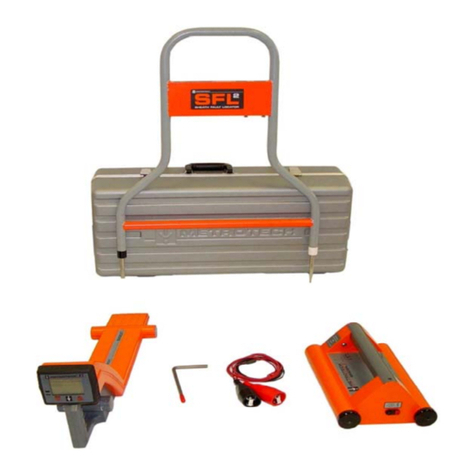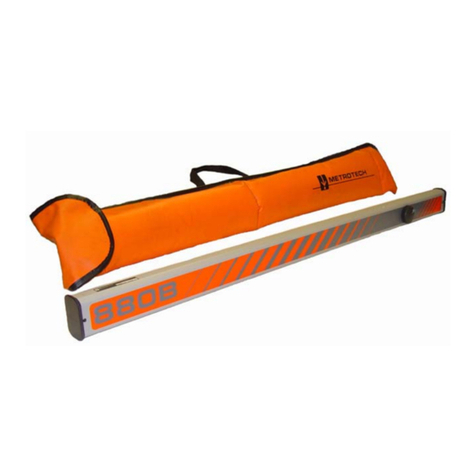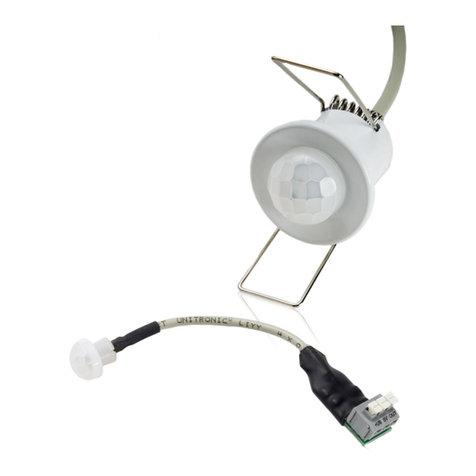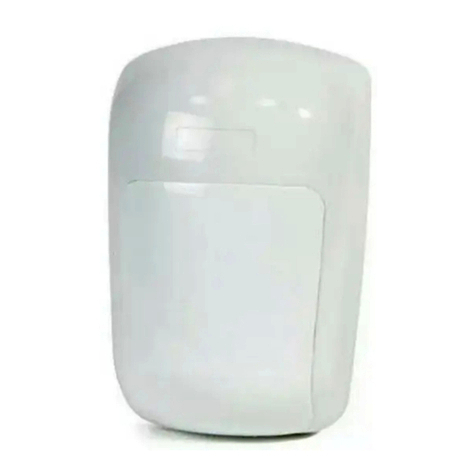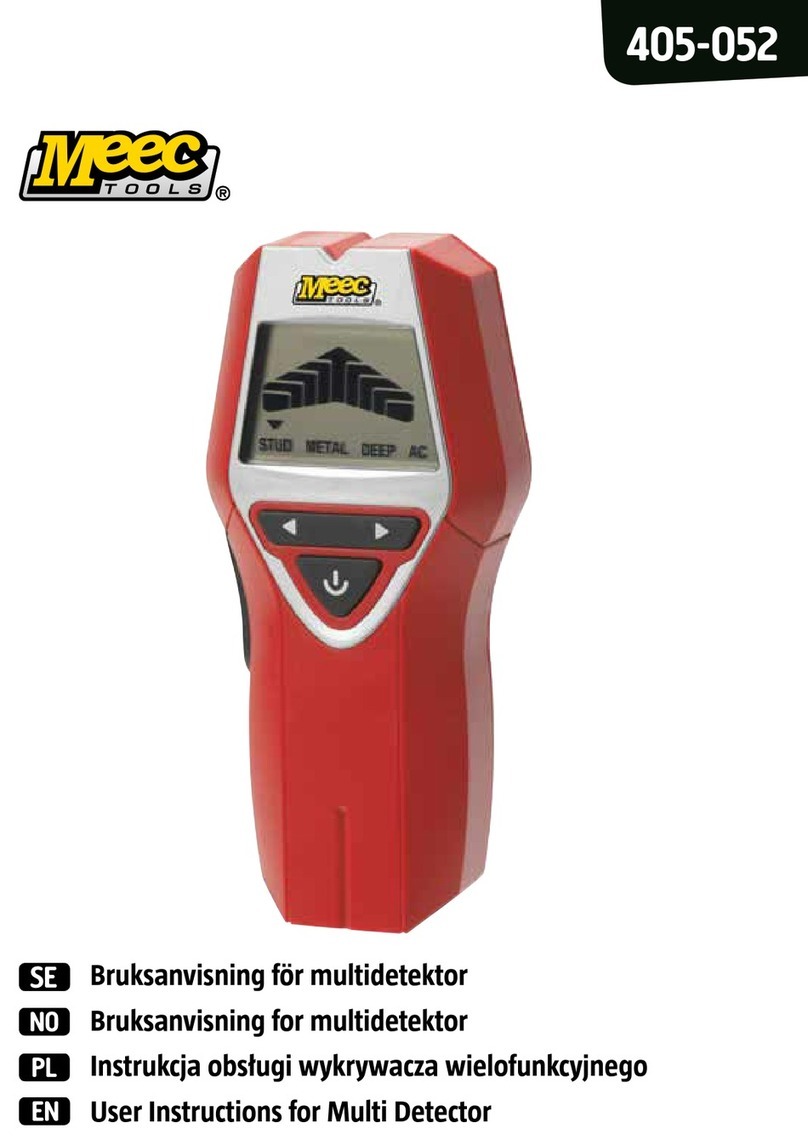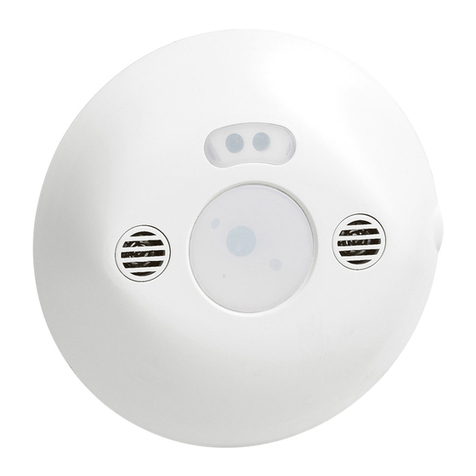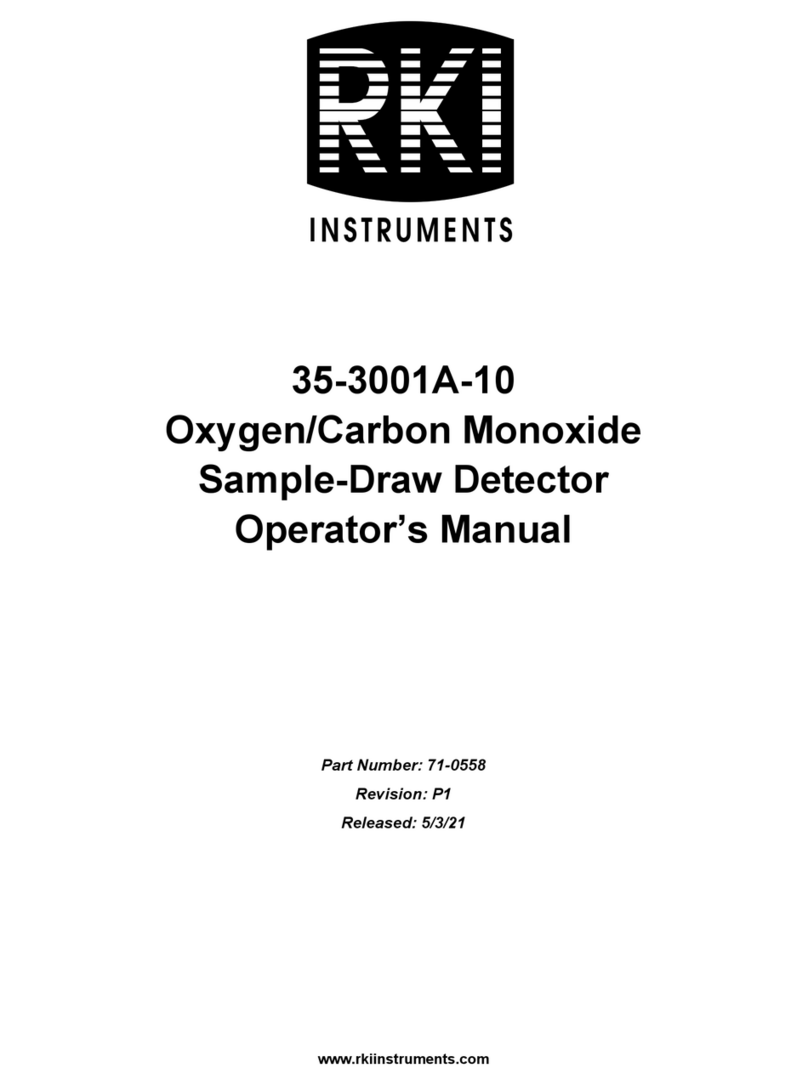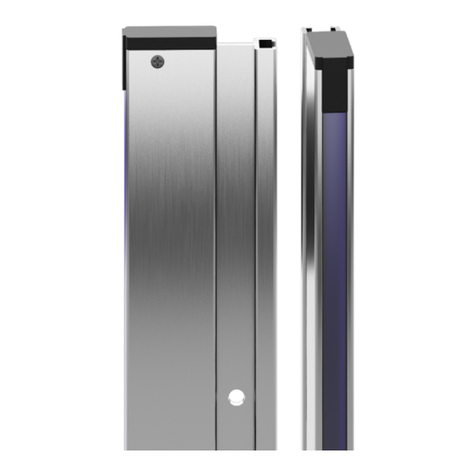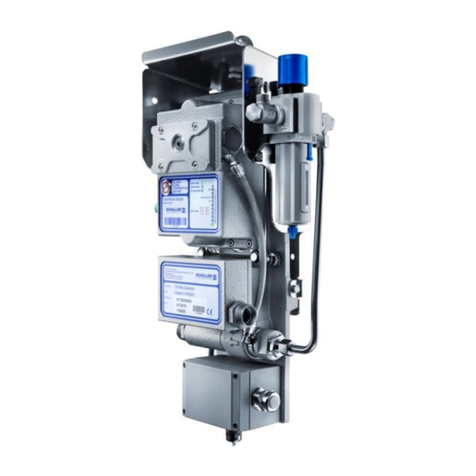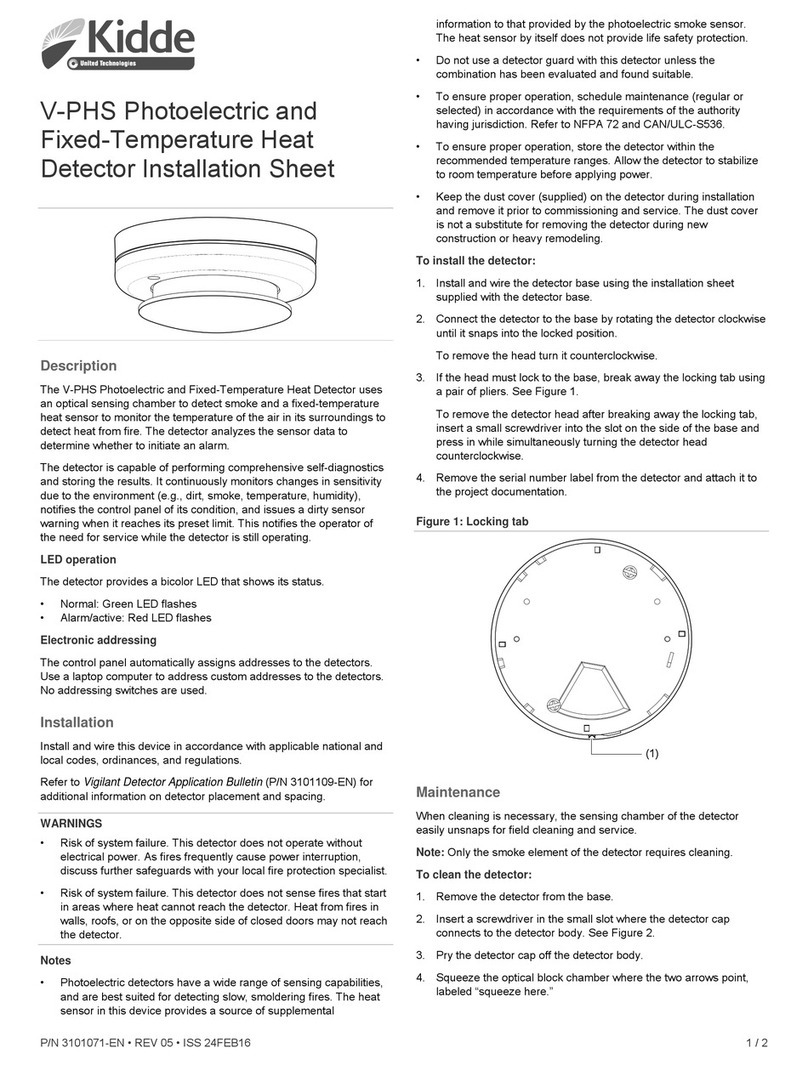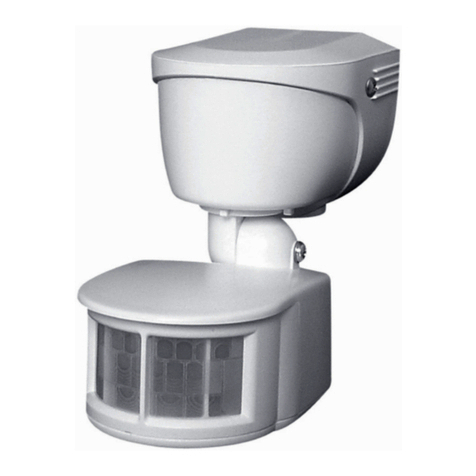Metrotech 480B User manual

2
480B™
SERVICE CENTER, SALES AND TECHNICAL SUPPORT INFORMATION
Corporate Headquarters Metrotech Eastern U.S. Service Center Metrotech European Service Center
3251 Olcott Street 1824 Murfreesboro Road, Ste. 104 Seba KMT
Santa Clara, CA 95054 Nashville, TN 37217 Dr. Herbert Iann St. 6
800-446-3392 800-624-6210 96148 Baunach, Germany
408-734-1400 Direct 615-366-7323 Direct +49 9544 680
408-734-1415 Fax 615-360-9855 Fax +49 9544 2273 Fax
www.metrotech.com nashville@metrotech.com service@sebakmt.com
sales@metrotech.com
Warranty: One year. Specifications Subject to change without notice, ISO 9001:2000 Certified. Copyright 2008. All Rights Reserved. Rev 12/18/07: B
OPERATIONS MANUAL
Pipe and Cable Locator

3
ISO 9001 CERTIFIED
Metrotech has received ISO 9001:2000 Quality Management System
Certification.
Metrotech adheres to the quality standard guidelines of ISO 9001:2000 and
ensures quality in its design/development, production, installation, and servicing
disciplines.
© Metrotech Corporation 2003-2008
Metrotech Corporation
3251 Olcott Street
Santa Clara, CA 95054
USA
Tel: 1.800.446.3392; 1.408.734.1400
Fax: 1.408.734.1415
Internet: www.metrotech.com
Revision B: 12/18/2007

4
Table of Contents
1 Introduction ..........................………………………………………….. 4
2 480B Equipment ................................... …………………….…………..5
2.1 Standard Equipment ............................... ………………………….…5
2.2 Optional Equipment .............................………………….…………. .6
2.3 Specifications ................................... ………………………………...7
2.4 Controls and Indicators of the Model 480B Transmitter .................... 8
2.5 Controls and Indicators of the Model 480B Receiver ........................ 9
3 Checkout Procedure ...................................…………………………….10
4 Operation ............................................…………………………………..11
4.1 Direct (Conductive) Connection ..................…………………………12
4.2 Inductive Coupling with the 4820 Metroclamp .....…………………..14
4.3 Inductive (Indirect Method) ....................…………………………….15
4.4 480BB 50/60Hz Power Line Locating………………………………..15
4.5 Estimating the Depth of a Conductor ........……………………….......16
4.6 Using the 4810 Probe for Pinpointing
and Depth Estimation ...........................………………………………..17
4.7 Using the Carrying Handle for Blind Searching,
Ground Surveys, and Metal Mass Location .....……………………......18
4.8 Conductor Identification
Using a Second 4820 Metroclamp ................…………………………..20
4.9 Marking the Conductor .........................……………………………....21
5 Tracing Factors and Helpful Information ...........……………………...22
5.1 Soil Conditions .................................………………………………….22
5.2 Field Strength of the Signal ............……………………………..........22
5.3 Verifying Versus Tracing……………………………………………...22
5.4 Adjacent Conductors .............………………………………................22
5.5 Deep Conductors .....................………………………………..............22
5.6 Tracing Long Runs ....................………………………………............23
5.7 Locating a Service Lateral ....................………………………………..23
5.8 Locating a Bend or Dead End ...............…………………………….....24
5.9 Valves, Manhole Covers, Tees, and Risers .……………………….......24
5.10 Common Bonded Conductors ...................……………………….......24
5.11 Congested Areas ..............................……………………………….....24
5.12 Pipes with Insulated Junctions ..............……………………………....24
5.13 Metroclamp Ground Requirements .........……………………….........25
5.14 Grounding Safety ..............................…….…………………………...25
5.15 Distribution Systems .......................………………………………......25
6 Maintenance ........................................…………………………………....25
6.1 Checking and Replacing the 480B Transmitter
and Receiver Batteries .......................…………...……………………....25
6.2 Basic Preventive Maintenance ...........…………………………….........26
Copyright ............................................………………………………………...27
Disclaimer……………………………………………………………………...27
Warranty ............................................………………………………………....27

5
List of Illustrations
2-1 480B Pipe and Cable Locator………………………………………...…..5
2-2 480B Transmitter: Controls and Indicators. ……………………………. 8
2-3 480B Receiver: Controls and Indicators....…………………….….…..… 9
.
4-1 Direct (Conductive) Connection .................………………………….…..12
4-2 Peak 480B Receiver Response ..................………………………..……...13
4-3 Null 480B Receiver Response .................…….....…………………….….14
4-4 Inductive Coupling with the 4” Metroclamp. ………………………..…...15
4-5 Estimating the Depth of a Conductor .....………………………….……...17
4-6 Estimating Conductor Depth with the 4810 Probe………………………..18
4-7 Depth Estimation Allowing for Uneven Ground ………………………....18
4-8 Carrying Handle Assembly .......................………………………………..19
4-9 Mounting the Transmitter and Receiver
onto the Carrying Handle .....................…………………………………....19
4-10 Adjusting for Audio Balance .............………………………………..........20
4-11 Position of Metroclamps When Using Two ....……………………….........21
5-1 Locating Service Laterals ............………………………………….............23

6
1 INTRODUCTION
The Metrotech Model 480B Pipe and Cable Locator is a versatile locating instrument designed for locating
and tracing the path of pipes and cables; detecting energizing 60Hz power lines; and when mounted on an
optional carrying handle, conducting blind searches, ground surveys, and locating underground metal
masses. Depth measurement is accomplished using the triangulation method.
The 480B is of split-box design, half being the Transmitter and half being the Receiver.
The Transmitter generates a signal which is applied onto the pipe or cable to be traced - referred to from
now on as the "conductor". The signal travels along the conductor, becoming weaker as it gets farther
away from the Transmitter. The distance that the signal travels before it becomes too weak to be detected
depends on the method of connection, the type of conductor, the surrounding soil, and the depth of the
conductor.
When you position the Receiver over the targeted conductor, it will detect the signal from the conductor,
enabling the operator to trace the path of the pipe or cable. The signal strength reading on the meter and
the audio tone directs the operator to the path of the conductor.
As with all electromagnetic locating systems, this unit is designed to locate metallic conductors only. The
word "conductor, pipe, or cable" refers to a metallic conductor throughout this manual.
Figure 2-1: Model 480B Pipe and Cable Locator: Standard Equipment

7
2 480B EQUIPMENT
2.1 Standard Equipment
Part Number Description Remarks
480B Transmitter
480B Receiver
800B004 Conductive Direct Connect Cable,
Attachment Ground Spike, and
Assembly Ground Plate
600A080 Operation Manual
2.2 Optional Equipment
Part Number Description Remarks
4820 Metroclamp and For use in inductive
jumper cable coupling mode
4810 Inductive Probe Upright, standing
operation
183045 Headset For use when locate site
is too noisy for audio tone
200766 Carrying Handle For use when mass metal or
blind searching
SON834 Sonde For tracing non-metallic pipe or conduit
500C071 Carrying Case Protective ABS material
600A030 VHS Video Tape Training Tape
600A051 VHS Video Tape SECAM, PAL, NTSC
* Tape depicts basic training procedures with the Metrotech 480 Pipe and Cable Locator. The same
procedures area applicable to the 480B.
Features of the Model 480B Transmitter and Receiver are discussed in detail in Sections 2.4 and 2.5.

8
2.3 Specifications
480B Transmitter
Nominal output power:
Inductive Mode: 100mW avg. (6.2V p-p across loop)
Conductive Mode: 125mW avg. (65V p-p across 2.7K
ohms)
Output frequency: 83kHz CW
Battery Type: Six size C Alkaline Cells
Battery Life: 400 hours, avg.
Dimensions: 11.63"L x 9"H x 3.13"D
(29.5cm x 23 cm x 8 cm)
Weight: 3.5 lb. (1.6 kg)
480B Receiver
Active Operating Mode
Nominal Sensitivity at loop for 50% meter deflection:
Lo Range: 30 microvolts p-p
Hi Range: 2 microvolts p-p
Sensitivity at AUX INPUT:
Increase Over Loop: 20% with 4810 Inductive Probe
375% with 4820 Metroclamp
50/60 Power Line Locating Mode
Frequency: 50/60Hz
Antenna Mode: Peak responding gradiometer
Sensitivity: @3 ft. for 50% meter deflection
Normal: 500ma

9
Hi: 45ma
Battery Type: Six size C Alkaline Cells
Battery Life: 250 hrs average
Headphone Impedance: 2K ohms (usable at 100 ohms and up)
Dimensions: 11.63"L x 9"H x 3.13"D
(29.5 cm x 23 cm x 8 cm)
Weight: 4.5 lb. (1.9 kg)
Both Transmitter and Receiver
Operation Temperature: 4° F to 122° F (-20°C to + 50°C)
Shipping Weight: 14 lb. (6 kg)
Shipping Dimensions: 19"L x 14"H x 9.5"D
(48 cm x 35.6 cm x 24 cm)
Modes of Operation: Direct Connection, Inductive Coupling, Inductive (Indirect)

10
Figure 2-2: 480B Transmitter: Controls and Indicators
2.4 Controls and Indicators of the Model 480B Transmitter
See Figure 2-2 for an illustration of the features described below.
Figure 2-2 Designation
1 POWER INDICATOR LAMP
Indicates power is on. Blinks steadily if battery power is good, will slow down
according to power left in batteries. When it stops blinking, replace the batteries.
2PUSH/PULL POWER SWITCH
Pull this switch to turn the Transmitter on. Power Indicator lamp will blink.
3 COND / AUX OUTPUT JACK
Insert either the direct connect cable or the 4820 Metroclamp cable into this jack. The
Transmitter’s internal antenna is automatically disconnected when a plug is inserted into
this jack.
4 BATTERY ACCESS

11
Figure 2-3: 480B Receiver: Controls and Indicators
2.5 Controls and Indicators of the 480B Receiver
See Figure 2-3 for an illustration of the features described below.
Figure 2-3 Designation
1 FIELD STRENGTH METER
The meter indicates the strength of the signal being received by the Receiver. The
reading will vary according to how close the Receiver is to the conductor. The receiver
displays the highest reading when it is directly over the target conductor.
Battery Test Indicator
When the receiver is turned ON, the needle should move into the BATT test area of
the meter. If it does not, the batteries need to be replaced.
2 SENSITIVITY KNOB
Controls the signal gain. Set as low as possible to avoid receiving signal from conductors
other than your target conductor
3 RANGE KNOB
Changes the ratio of the signal amplification.
4 DEPTH ANGLE BUBBLE
Position the bubble in the indicated area to estimate the depth.
5 HEADPHONE JACK
Plug in point for headphones.
6 CARRYING HANDLE THREADED BUSHINGS
Connection point for Carrying Handle screws.
7 SPEAKER
Emits audio tone which guides operator toward the targeted conductor.
8 MODE SWITCH
Two operating positions:
Active – Direct Connect, Inductive Coupling and Inductive
Passive – For tracing energizing 50/60Hz power lines
9AUX INPUT Jack
Plug in point for 4810 Inductive Probe, or second 4820 Metroclamp
(when using two clamps) into this jack.
10 BATTERY ACCESS
3 CHECKOUT PROCEDURE

12
To insure proper operation of the 480B Pipe and Cable Locator, use the checkout procedure at the
following times:
• Upon receiving the equipment
• Before each job, preferably before you leave for he site
• If problems arise during a locate
1 Turn the Transmitter on by pulling the PUSH/PULL POWER SWITCH and place the Transmitter
on the Ground. If the batteries are working, the battery lamp will blink.
2 Turn the Receiver ON (if the batteries are working, the meter will move to the BATT section of
the meter) and set to the Active/Norm Mode.
3 Set the SENSITIVITY knob to the “SET” line.
4 Hold the Receiver in a position parallel to the Transmitter. The meter needle should move all the
way to the right side of the meter, and the audio tone should be loud.
5 Move away from the Transmitter, holding the Receiver in the same parallel position. At 10-20
feet the signal level should start to drop - the meter needle will move to the left and the audio tone
will begin to fade.
6 Turn the Receiver perpendicular to the Transmitter - both the meter reading and the audio tone
should suddenly drop.
If either the Receiver or the Transmitter does not respond to the above tests, check the batteries. Refer to
Section 6, Maintenance for instructions.
To check the 50/60Hz Power Mode:
1 Test the Receiver only (the Transmitter is not required for passive locating). Stand under an
indoor AC powered light future.
2 Set the Range to “HIGH” and the Sensitivity to the 12 o’clock position.
3 Hold the Receiver in a vertical position and raise the Receiver upward toward the light
fixture. The meter reading and audio tone should increase as the Receiver gets closer to the
light fixture.
If either the Receiver or the Transmitter does not respond to the above tests, check the batteries. Refer to
Section 6, Maintenance for instructions.
IMPORTANT NOTE
The 480B Receiver features a 30-minute automatic shut-off to prevent the Receiver from being
accidentally left on. A beep will sound to alert the operator that the Receiver is about to shut off.
Reactivate the Receiver by turning the RANGE KNOB back to “OFF” and the to “NORM” or
“HIGH”.
4 OPERATION
Follow the checkout procedure described in Section 3 before operating the equipment.
To operate the 480B Pipe and Cable Locator, use the Transmitter to apply the signal to the conductor, and
use the 480B Receiver to trace the signal coming off the conductor.
For a successful locate you must be sure that you have the best possible connection to the target conductor
and that the conductor is well grounded. If there is a break in the circuit path, very little transmitter signal
will reach the receiver. Look for disconnected leads, circuit breakers, open switches, insulators, etc.

13
Power lines and telephone sheaths are assumed to be grounded. If you are tracing a conductor with an
exposed insulated joint, such as a gas pipe with a gas meter, use the jumper cable to bypass the meter
(insulator). Attach each end of the jumper cable to opposite sides of the insulator.
To trace non-metallic pipe (sewer line) or duct send the signal through the conductor by inserting a snake
or fishtape into the pipe and connecting the Direct Connect Cable from the Transmitter to one end of it.
SAFETY WARNING
Never make a direct connection to a live power cable. Use a voltmeter to check for active electrical power.
Always make sure the power to a cable is turned off before you make a direct connection to it. (live
secondary power can be located safely using an Inductive clamp.)
To start locating:
There are three different methods of applying the signal to the conductor with the transmitter - Direct
Connection, Inductive Coupling and Inductive. A description of each method and use instructions follow
below.
In addition to three different methods of inducing the signal onto the conductor, there are two methods -
PEAK and NULL by which to locate your conductor.
The PEAK method is generally used to follow the path or direction of a line. It is the preferred method for
general locating because the sensitivity or gain can be kept to a minimum which prevents bleed-off onto
nearby lines.
The NULL method is used for more accurate locating of the centerline of a conductor. You would want to
get an accurate locate of a conductor centerline before determining the depth of a conductor.
PEAK and NULL procedures are described below.
4.1 Direct (Conductive) Connection
This is the preferred mode of operation because the Transmitter is connected directly to a metallic part of
the conductor (hydrant, meter, riser, valves, sheath, tracer wire) allowing a strong maximum signal to reach
the conductor. In this operating mode the Receiver can be closer to the Transmitter, and adjacent buried
conductor interference is reduced.
Transmitter:
1 With the Transmitter OFF, plug the Direct Connect Cable into the jack labeled COND/AUX OUTPUT
on the 480B Transmitter.
2 Attach the RED lead of the Direct Connect Cable to an electrically clean metallic part of the targeted
conductor.
3 Extend the BLACK lead of the Direct Connect Cable as far as possible from the conductor, at a right
angle. Look for a convenient existing ground, such as a metal street sign. Be careful not to get close to or
cross any adjacent buried conductors. If no existing ground is available, use the ground spike as far into the

14
Ground as possible, and attach the BLACK lead. If the ground surface is too hard, place the ground plate
on the ground and attach the BLACK lead. To improve conductivity, put water and /or a weight on it. See
Figure 4-1.
Figure 4-1: Direct (Conductive) Connection
4 Pull the Transmitter POWER Switch ON. Set the MODE switch to POWER TEST. The POWER
TEST LAMP should blink steadily, indicating a charged battery.
5 Set the Receiver MODE switch to “Active”.
6 Set the Receiver SENSITIVITY KNOB to a low setting on the left of the dial, adjusting as needing for
good signal reception. As you move farther away from the Transmitter, you will need to increase the
sensitivity. It is important to tune the sensitivity as low as possible in order to sharpen the reception and
reduce signal bleed-off onto adjacent conductors.
7 Set the Receiver RANGE knob to “NORM”, adjusting to “HIGH” when necessary.
8 When starting a locate, you need to “prelocate” the targeted conductor by using the broad range PEAK
method first to find the general location of the line. Then hone in on the exact location of the conductor
with the precision NULL method.
PEAK METHOD
The PEAK method gives a maximum (loud tone) signal. Hold the Receiver by the handle in a vertical
position and move it from side to side. The audio tone and field strength will increase as you approach the
location of the conductor. See Figure 4-2.

15
Figure 4-2: Peak 480BB Receiver Response
NULL METHOD
To pinpoint the location of the conductor use the NULL method by holding the 480BB Receiver in a flat,
horizontal position. The audio tone will increase and then go silent at the exact location of the conductor.
See Figure 4-3.
Figure 4-3: Null 480B Receiver Response
DO NOT HOLD THE RECEIVER AT AN ANGLE - INCORRECT INFORMATION WILL
RESULT!!
9 To determine the direction of the conductor, stop and vertically rotate the receiver to the left and right.
The highest signal strength reading indicates the direction of the conductor.
Continue to trace the conductor in the direction indicated by the indicators on the receiver. If the

16
signal strength drops abruptly, the conductor may have changed direction or stopped.
10 When you have pinpointed the conductor's location, mark it as required. See Section 4.5 for APWA
color markings.
11 When you have finished the locate, turn the Transmitter and Receiver off and disconnect the
accessories.
4.2 Inductive Coupling with the 4820 Metroclamp
Use this method if Direct Connection is not possible, but you can position a Metroclamp around the
conductor you want to trace. The Inductive Coupling method uses the 4820 Metroclamp to induce a signal
onto the conductor when direct metallic contact is not possible. The clamp is placed around the target
conductor. The Transmitter then induces a signal through the clamp.
When using the Metroclamp the conductor must be well grounded, i.e. with sheaths and neutrals. When
tracing lines that have insulators, the insulators should be bypassed, using the supplied jumper cable.
1 With the Transmitter OFF, plug the 4820 Metroclamp cable into the COND/AUX jack on the 480BB
Transmitter.
2 Place the Metroclamp around the conductor, below the electrical ground. See Figure 4-4. Make sure
that the clamp jaws are completely closed.
Figure 4-4: Inductive Coupling with the Metroclamp
3 Continue your locate by following steps 4 through 11, Section 4.1 Direct Connection.
4.3 Inductive (Indirect Method)
If you cannot make a direct connection onto the conductor, or use the Metroclamp, use the antenna that is
mounted on the Transmitter case to induce signal onto the conductor.
This is the least preferred method of inducing signal onto a conductor because the signal is broadcast
through the soil and air and can be picked up by other conductors in the area. In this mode the signal
radiates from the antenna mounted on the transmitter case and couples to the conductor by electromagnetic
induction.

17
If no direct connect cable or Metroclamp is attached to the DIRECT/4820 CLAMP jack, the transmitter
automatically broadcasts the signal through the antenna mounted on the transmitter case.
No ground connection is needed when a signal is induced onto the target conductor.
SAFETY WARNING
Do not operate the Transmitter in the Inductive Mode while it is resting on or near a metal surface or large
metal object. Incorrect test readings and damage to the transmitter may result.
1 Position the transmitter over the buried conductor making sure that the transmitter is parallel or in line
directly over the targeted conductor.
2 When using the Inductive method, the receiver must be 35-50 ft. away from the transmitter depending on
how high the sensitivity is set. The higher the sensitivity, the farther from the transmitter the receiver must
be to avoid picking up the transmitter signal traveling through the air.
3 Continue your locate by following steps 4 through 11, Section 4.1 Direct Connection.
4.4 480B 50/60Hz Power Line Locating
When locating a power line the 480B Transmitter is not required as you are locating the power line by
tracking the path of the 50/60 current coming off the line (the line must be loaded).
This method gives a maximum (loud tone) signal. The 480B Receiver is held in a vertical position at right
angles to the line for maximum signal. (Note the logical path of the line from the source).
You will notice a difference audio tone when using the 50/60Hz mode, this is normal.
50/60 Power Line Locating Operation:
1 Move the 480B Receiver a few feet away from where you want to start searching.
2 Turn the Receiver MODE Switch to “Passive 50/60Hz”.
3 Hold the Receiver in a vertical position. Then adjust the SENSITIVITY knob to bring the needle
within the “SET” zone. If the meter does not adjust to “SET”, turn the SENSITIVITY knob all
the way to the right (clockwise) and/or move closer to the conductor. If you still cannot adjust to
the “SET” position, switch the RANGE knob to “HIGH”:, and then attempt to adjust the
SENSITIVITY to “SEY”. (If no current is present you will be unable to adjust to “SET”).
4 Hold the Receiver in an upright, vertical position with the face of the Receiver facing you, and at
right angles to the targeted conductor.
5 Move the Receiver from side to side over the targeted conductor location until you obtain the
maximum PEAK response. For better signal reception, hold the Receiver close to the ground. As
you move closer to the targeted conductor, the speaker tone will gradually get louder. The loudest
tone will indicate you are over the conductor in the PEAK mode.

18
6 If the needle is at or close to the end of the meter scale, adjust the SENSITIVITY knob to bring
the needle back to the middle of the meter. (Decreasing the SENSITIVITY will give a sharper
Receiver response as you move closer to the target conductor.) Then move to a new position and
note the meter response. The meter reading will increase if the signal gets stronger (closer to the
conductor), or decrease is the signal gets weaker (further from the conductor).
7 Keep adjusting the SENSITIVITY knob and the position of the Receiver until you find a place
that gives a maximum reading. (This will occur when the Receiver forms an angle of 90 degrees
with the target conductor.)
4.5 Estimating the Depth of a Conductor
Follow this procedure to estimate the depth of a buried conductor:
1 Using the NULL method, find the exact location of the conductor. At a minimum distance of 35 feet
from the transmitter (to prevent air coupling between the transmitter and receiver), locate and mark the
conductor.
2 Then, still in the same mode of operation (NULL), tilt the Receiver to 45 degrees (aligning the bubble),
and move off to the side of the conductor. See Figure 4-5.
Figure 4-5: Estimating the Depth of a Conductor
3 When you "locate" the conductor a second time, with the Receiver at a 45 degree angle, mark the spot on
the ground. The distance between this second spot and the true location of the conductor (A), less the
distance between the center of the Receiver and the ground (B), is equal to the depth of the conductor (C).
See Figure 4-5.
4 Measurement accuracy is affected by the ratio of the conductor diameter compared to how deep the
conductor is buried. (The larger the pipe the less accurate the depth measurement.) Depth measurements
are also affected by soil conditions, overhead lines, and adjacent conductors.

19
4.6 Using the 4810 Probe with the 480B for Pinpointing and Depth Estimation
The long, pointer like design of the 4810 Inductive Probe provides a much sharper Receiver response than
the standard Receiver antenna mounted on the Receiver housing. Because it can be easily held close to the
ground, the Probe provides greater accuracy, especially in the presence of adjacent conductors, for
pinpointing the location and estimating the depth of a conductor. The 4810 Probe works only in the NULL
method.
To estimate the depth of a buried conductor:
1 Locate and mark the position of the targeted conductor.
2 Plug the 4810 Inductive Probe into the AUX INPUT on the 480BB Receiver.
3 Turn the 480B Receiver SENSITIVITY all the way up and turn the RANGE to "HIGH". The thumb
knob on the 4810 Probe will then control the 480B Receiver sensitivity.
4 Turn the 480B Receiver MODE SWITCH to "ACTIVE".
5 Adjust the 4810 Inductive Probe SENSITIVITY as needed, keeping it as low as possible to sharpen the
Receiver response.
6 Use the same triangulation procedure as described in Section 4.5 Estimating the Depth of a Conductor.
Tilt the 480B Probe to a 45 degree angle as indicated by the bubble at the base of the Probe handle and then
move off to the side of the conductor. When the conductor is "located" a second time with the Probe at a
45 degree angle, mark the location on the ground. The distance between the two marks is equal to the
depth of the conductor. See Figure 4-6.
Figure 4-6: Estimating Conductor Depth with the 4810 Probe
7 If your conductor is buried in the shoulder of a hill, compensate for this fact by subtracting "C" from
"A" and "B" measurement as shown in Figure 4-7.

20
Figure 4-7: Depth Estimation Allowing for Uneven Ground
4.7 Using the Carrying Handle for Blind Searching, Ground Surveys, and Metal Mass Location
To conduct a blind search, a ground survey, or to locate an underground metal mass, the 480B Transmitter
and Receiver must be mounted on a carrying handle (Part# 200766). The handle positions the Receiver and
the Transmitter in correct relation to each other.
Mounting the 480B Transmitter and Receiver to the Carrying Handle
1 Assemble the Carrying Handle as shown in Figure 4-8. Do not insert the end pieces beyond the stop pins.
Secure the screws on the center section.
Figure 4-8: Carrying Handle Assembly
2 Mount the 480B Transmitter onto the Carrying Handle by placing the single screw-end of the handle into
the Transmitter and securing it to the Transmitter with the handle screw. See Figure 4-9, Step 1.
3 Place the mounted Transmitter on the ground as shown and attach the 480B Receiver to the handle,
screwing the two handle screws into the two threaded bushings on the Receiver. The Receiver should be
perpendicular to the Transmitter as shown in Figure 4-9, Step 2.

21
Figure 4-9: Mounting the Transmitter and Receiver onto the Carrying Handle
4 Pull the Transmitter POWER switch on.
5 Set the Receiver RANGE switch to "Norm" (the Receiver will turn on).
6 Set the Receiver SENSITIVITY Switch to "11 o'clock position."
7 Set the Receiver MODE Switch to "Active".
8 Because the Receiver is operating close to the Transmitter, the Receiver will detect the Transmitter
output by air coupling and emit a tone. In order to cancel the air coupling the Receiver must be
positioned exactly perpendicular to the Transmitter:
The operator must be a least 15 feet from all metal objects, pipes, fences, cars, etc.
Hold the instrument at arms length, parallel to the ground with the Receiver facing up as shown in Figure
4-10. First turn the topmost knob clockwise until full tone is indicated and the spring is compressed. Then
turn this same knob in a counterclockwise direction until you have a zero audible and visual signal.
Continue to turn through this “no signal” area until a slight signal is heard and the visual indicator reads
within the “SET” area. Leave the topmost knob at that position. If you are unable to find a “no signal”
area, lower the sensitivity.
Table of contents
Other Metrotech Security Sensor manuals
Popular Security Sensor manuals by other brands
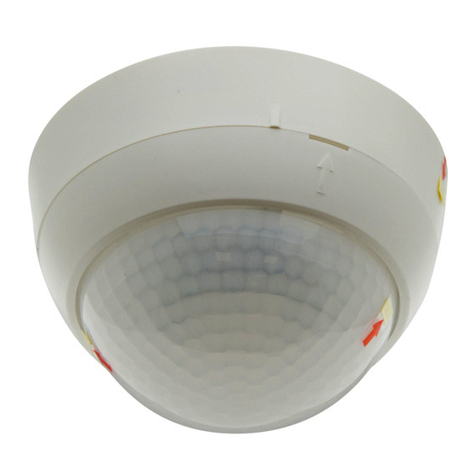
B.E.G.
B.E.G. PD4-M-1C-GH-SM Installation and operating instruction
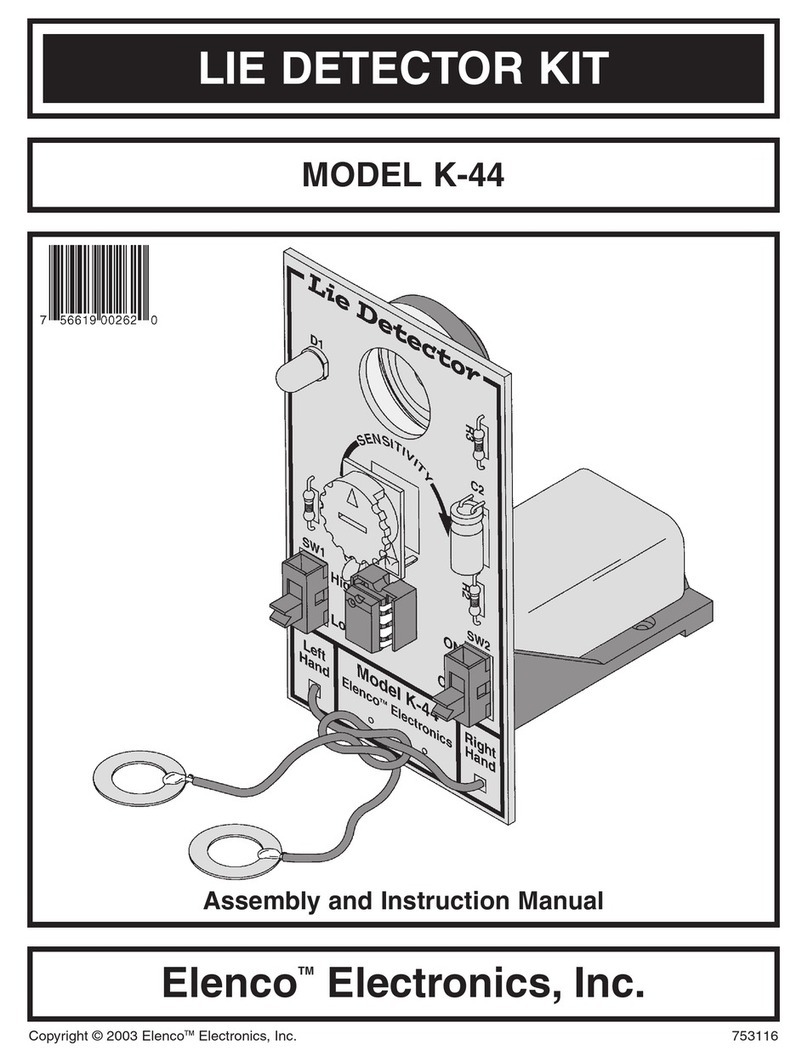
Elenco Electronics
Elenco Electronics K-44 Assembly and instruction manual
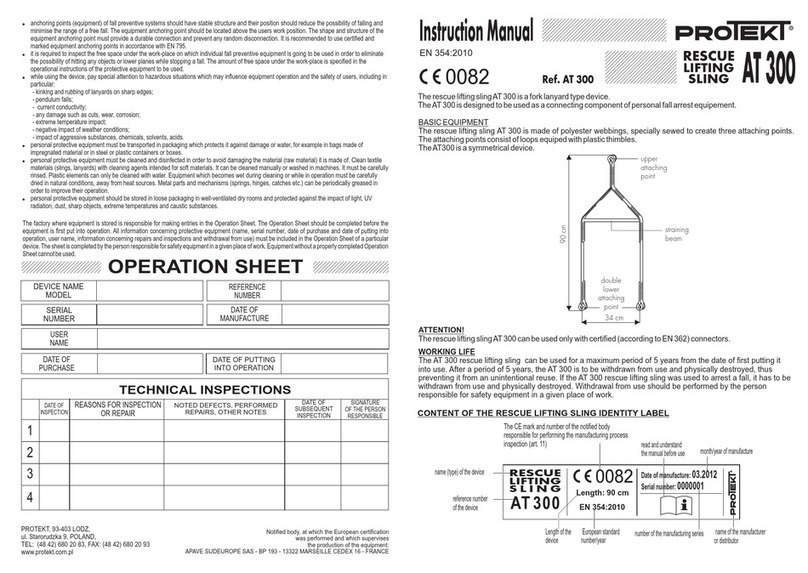
Protekt
Protekt AT 300 instruction manual
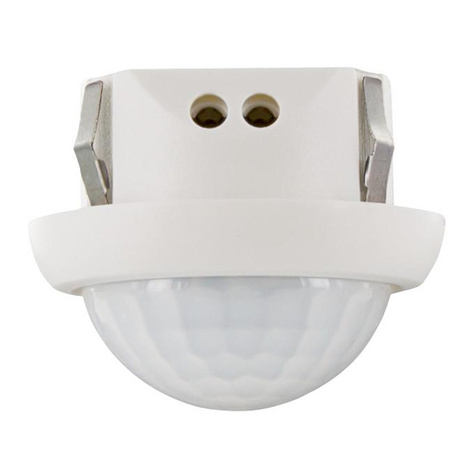
B.E.G. LUXOMAT
B.E.G. LUXOMAT PICO-DALILINK 93908 manual
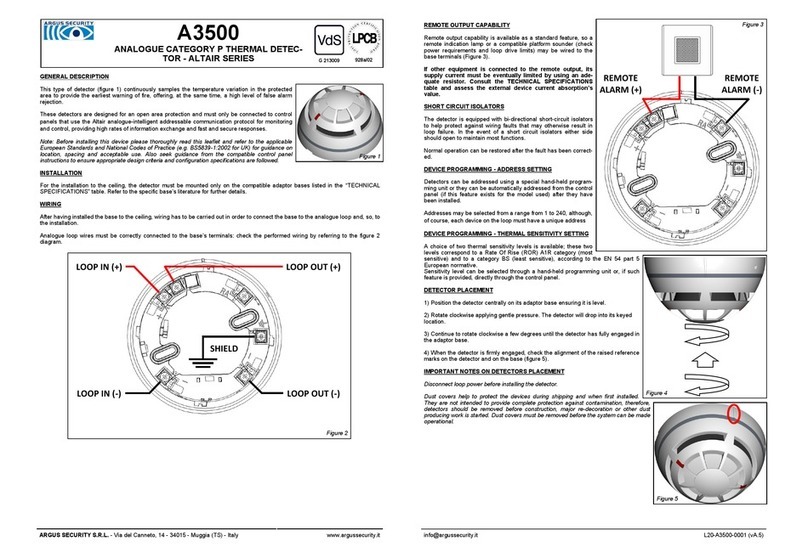
Argus Security
Argus Security A3500 manual
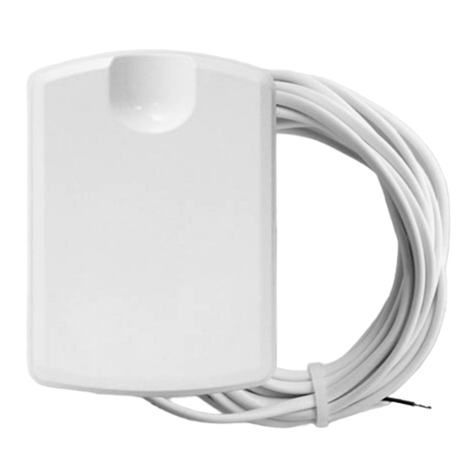
teko
teko Astra-361 User instruction
